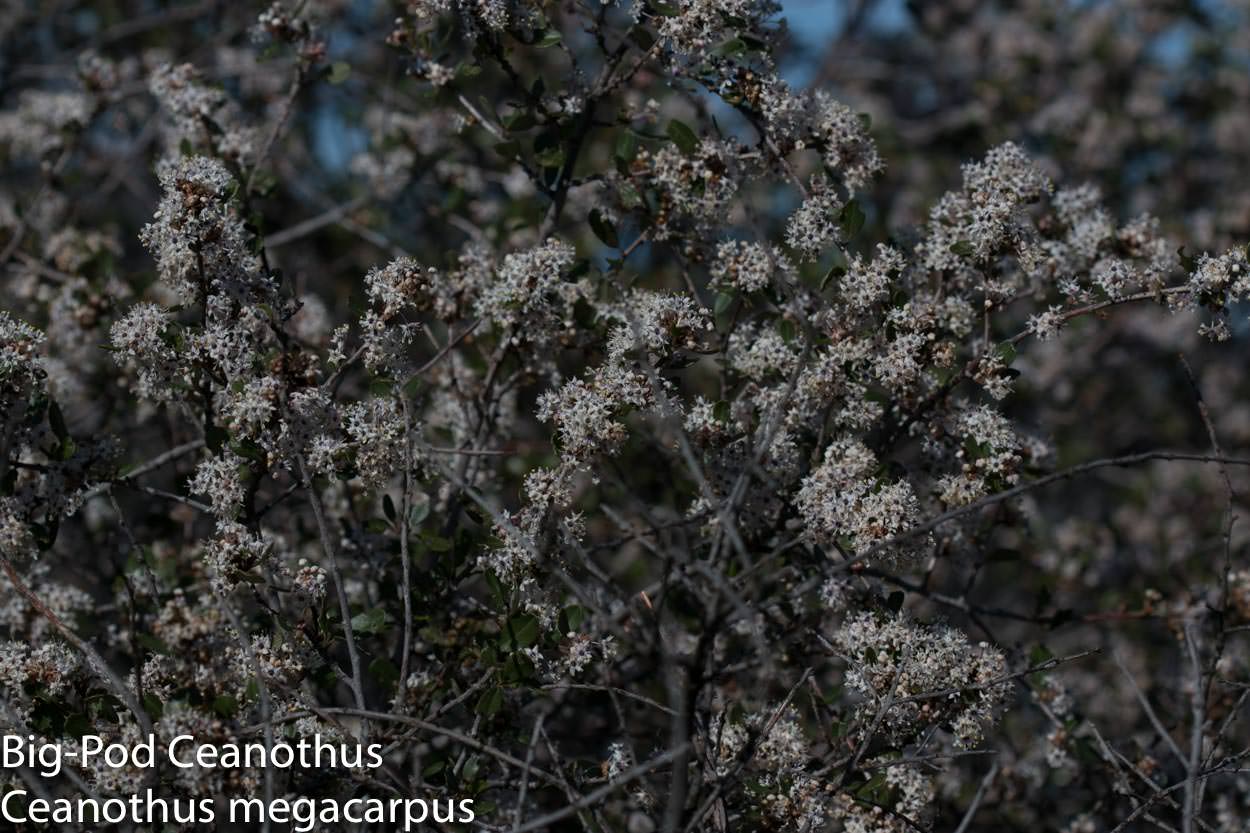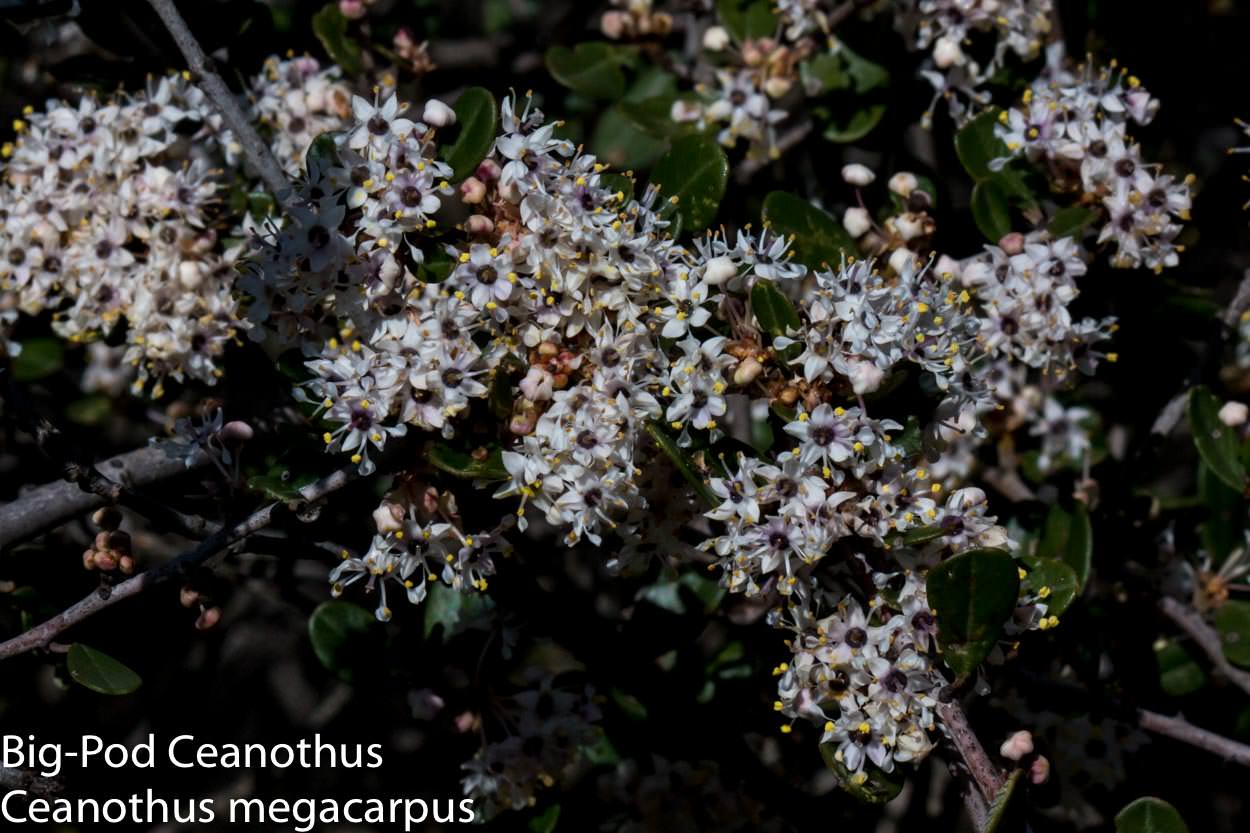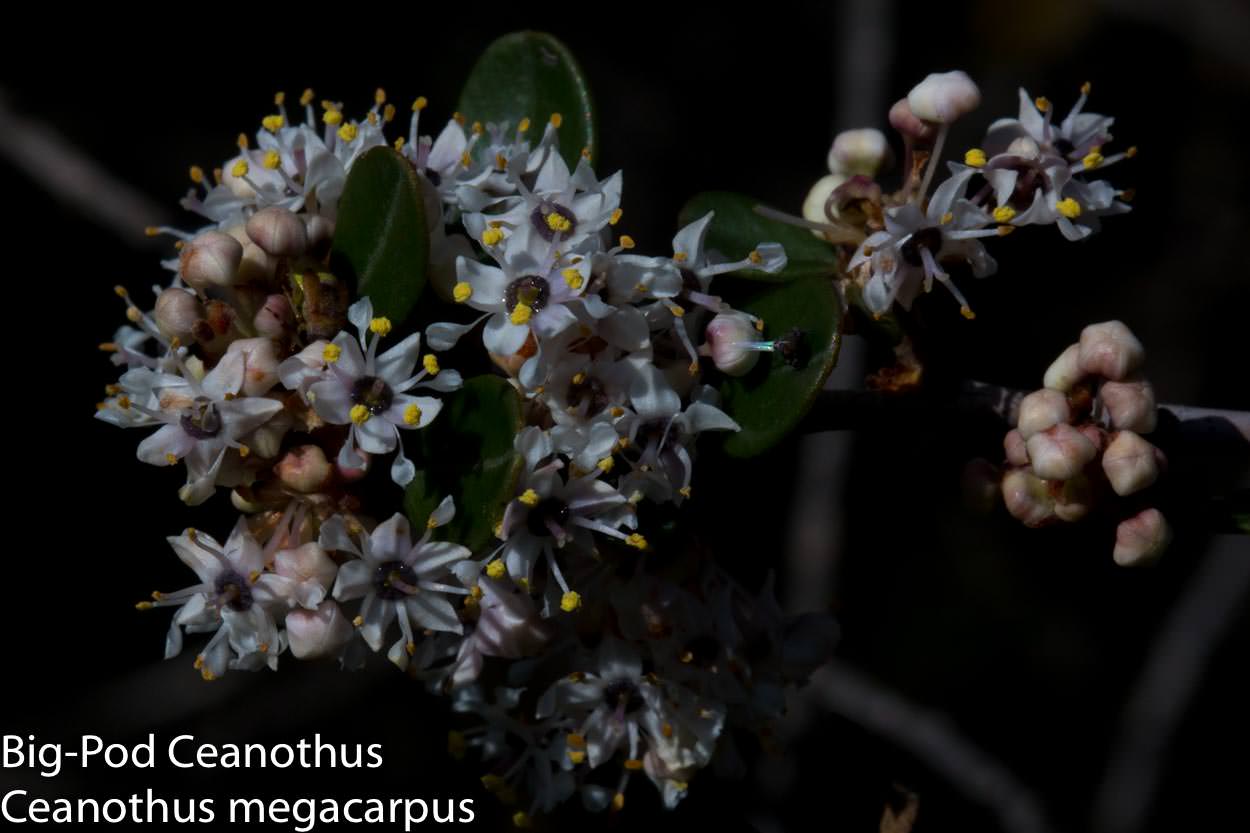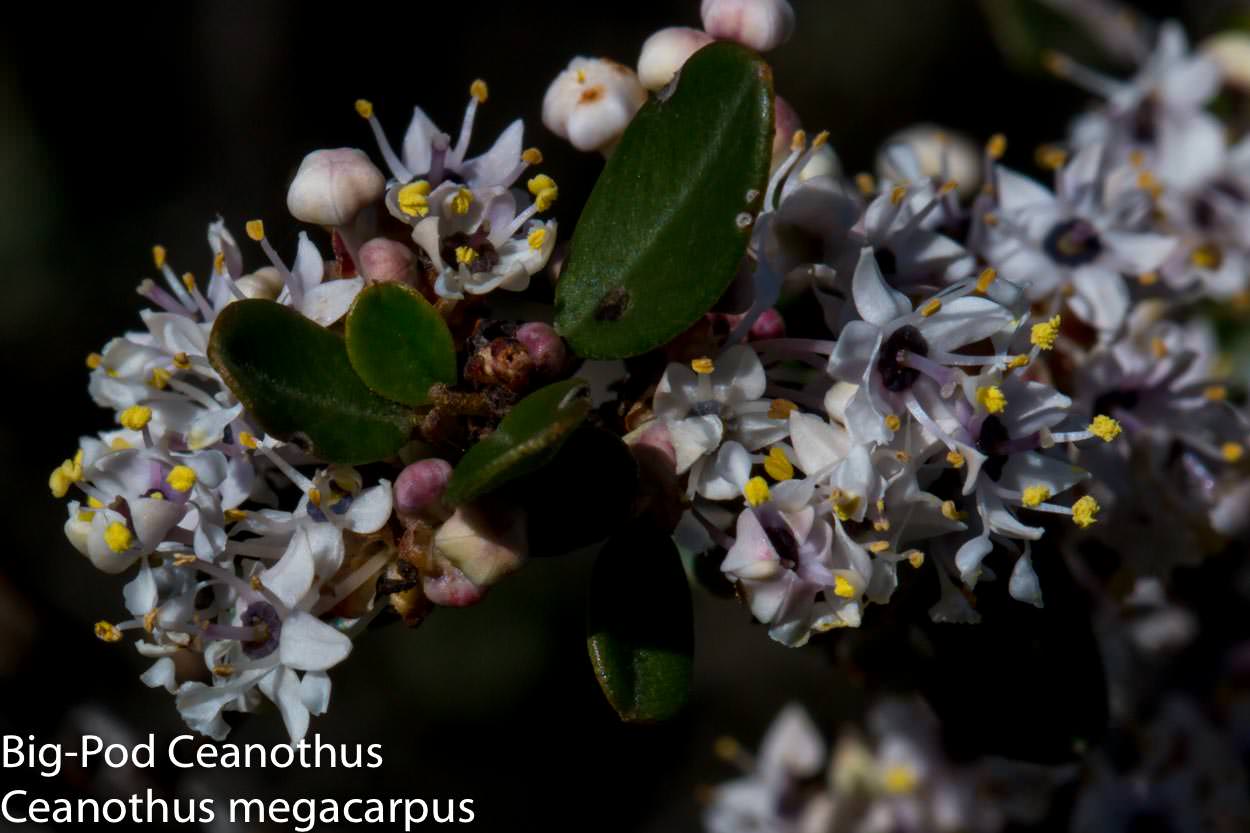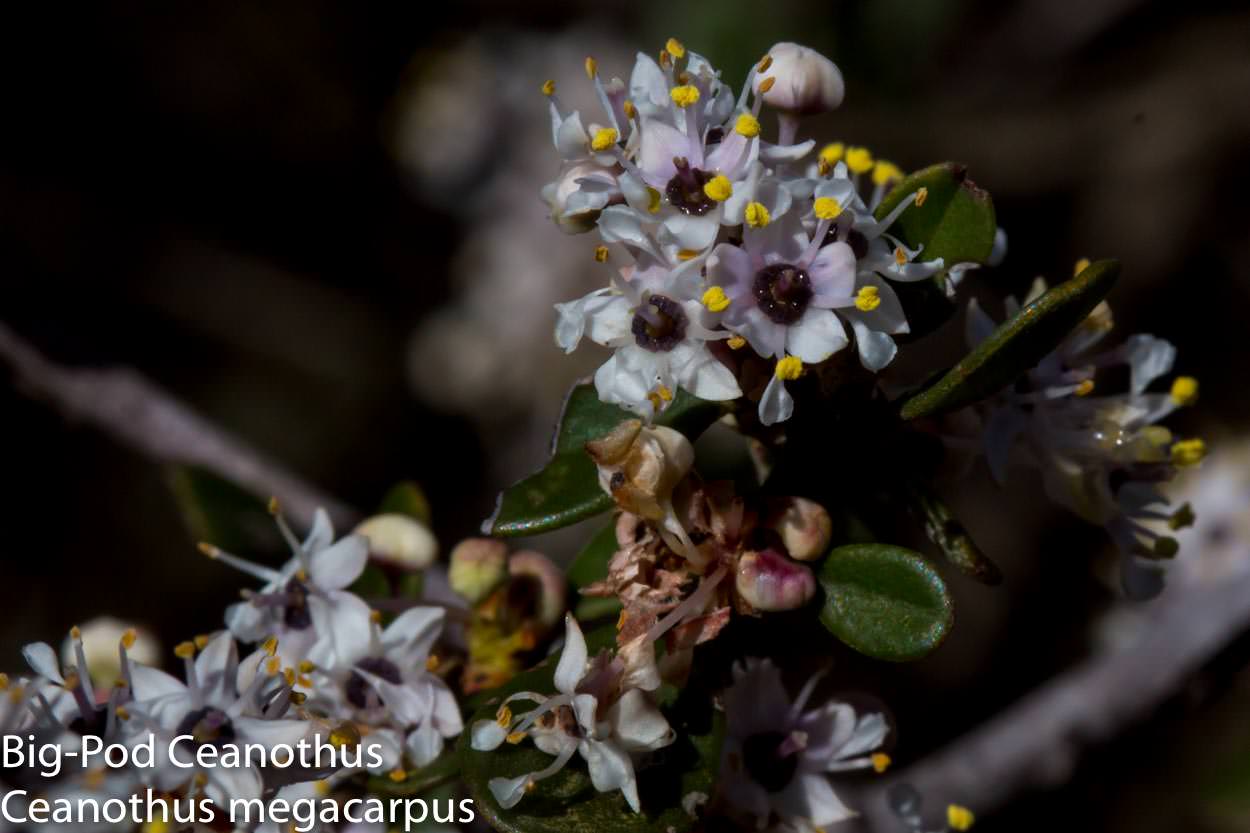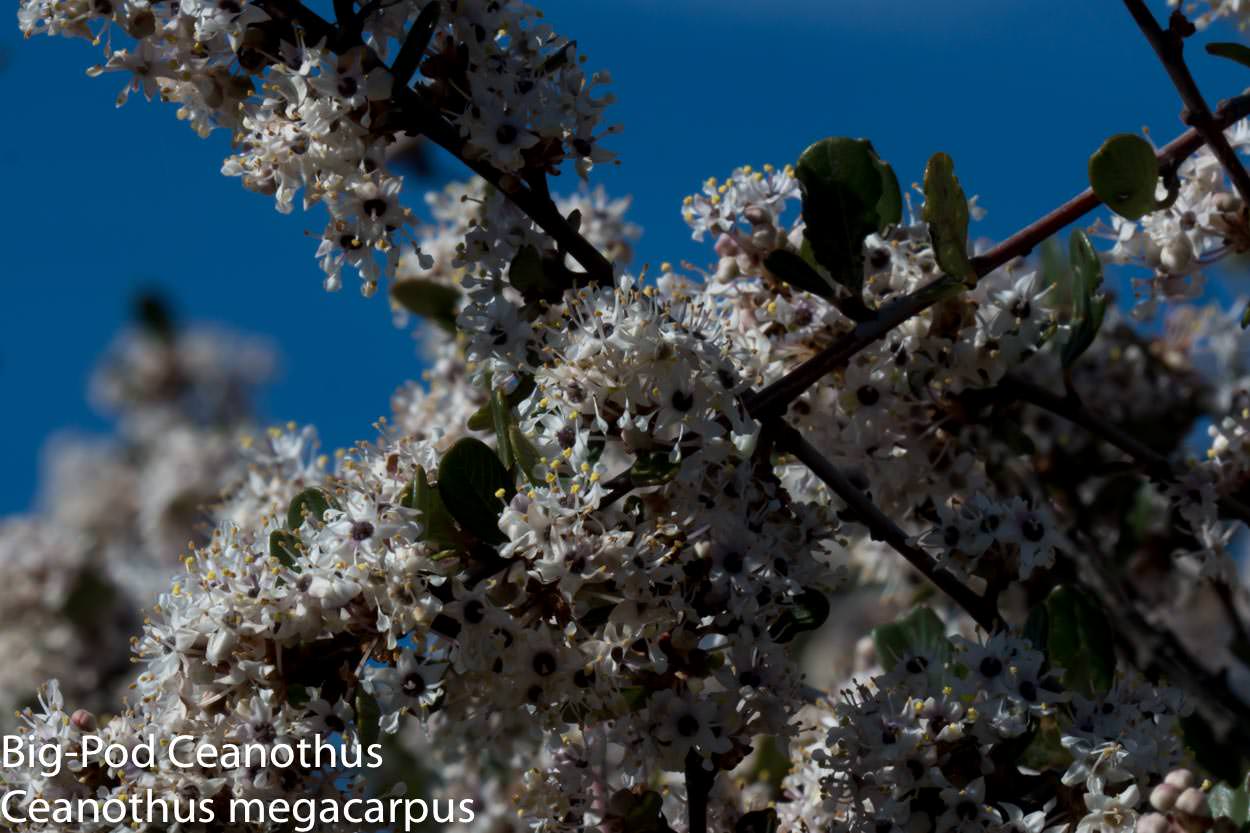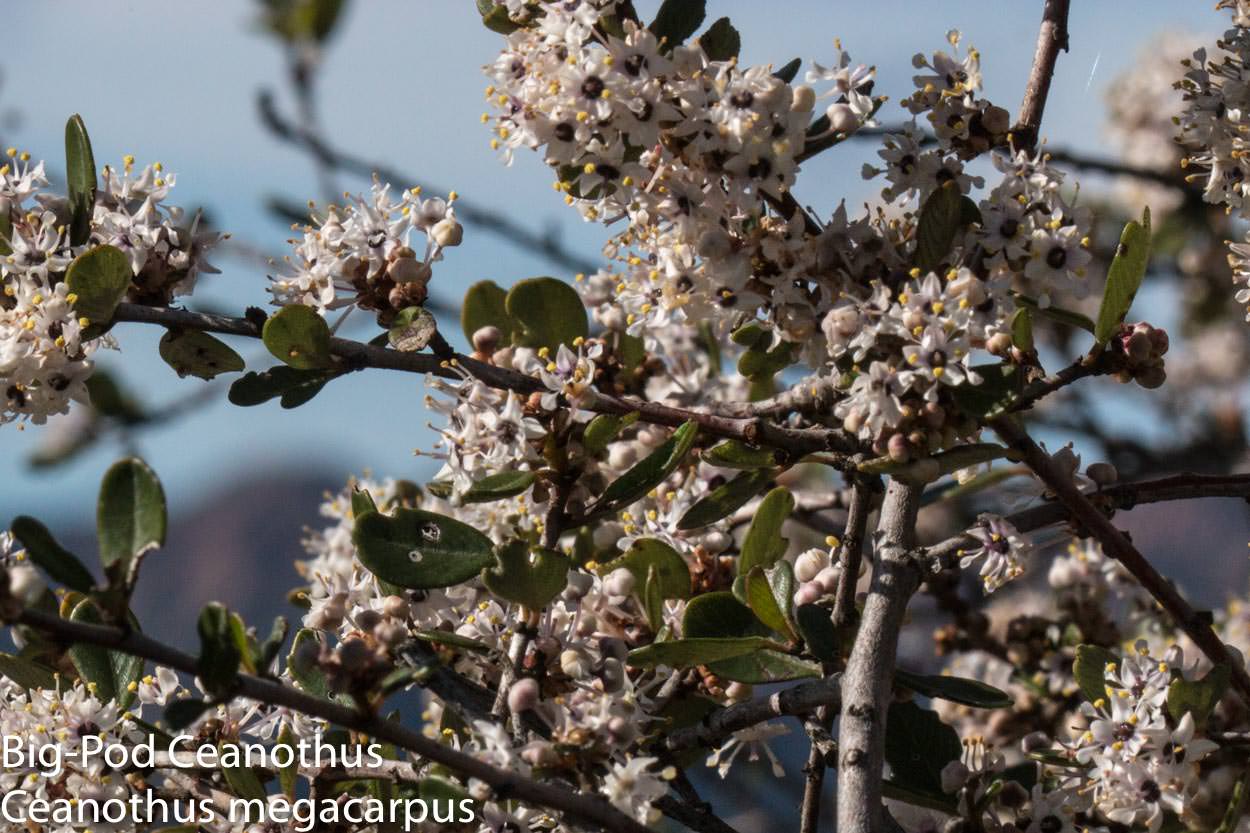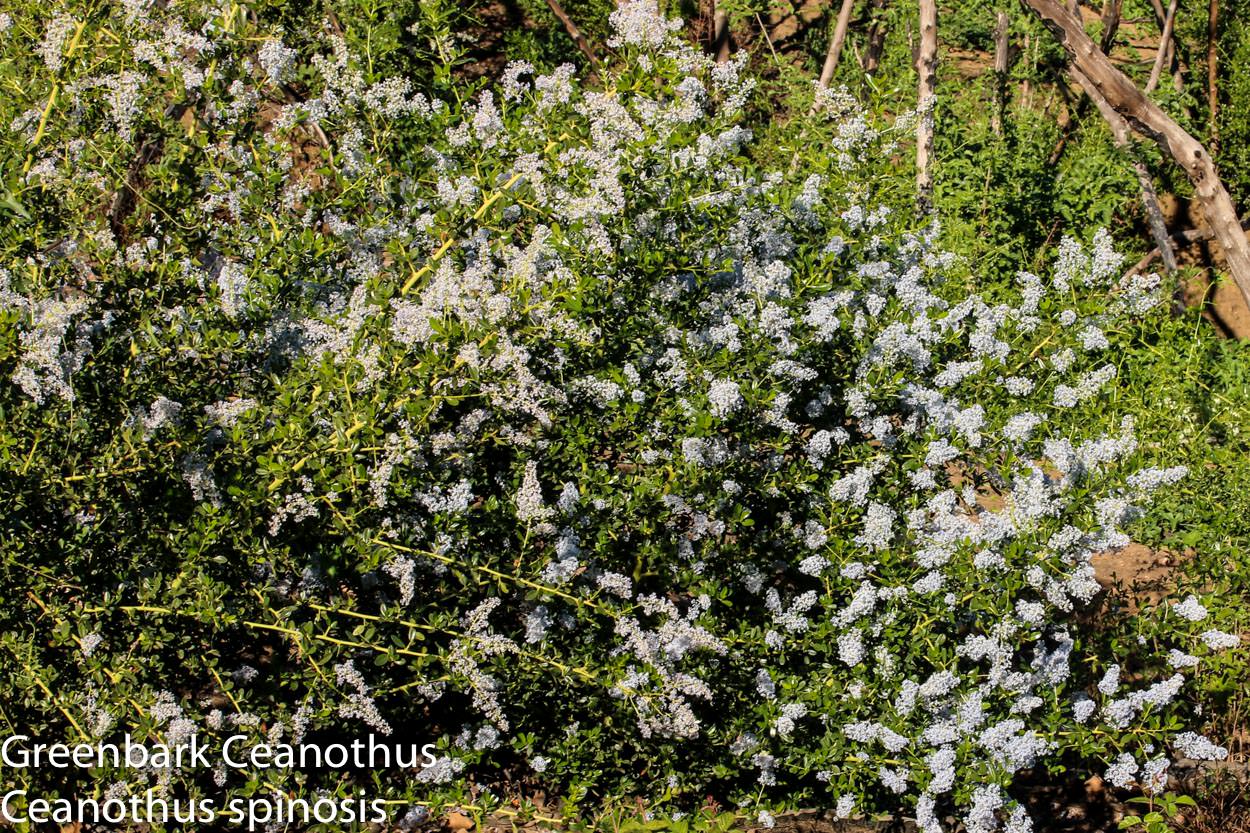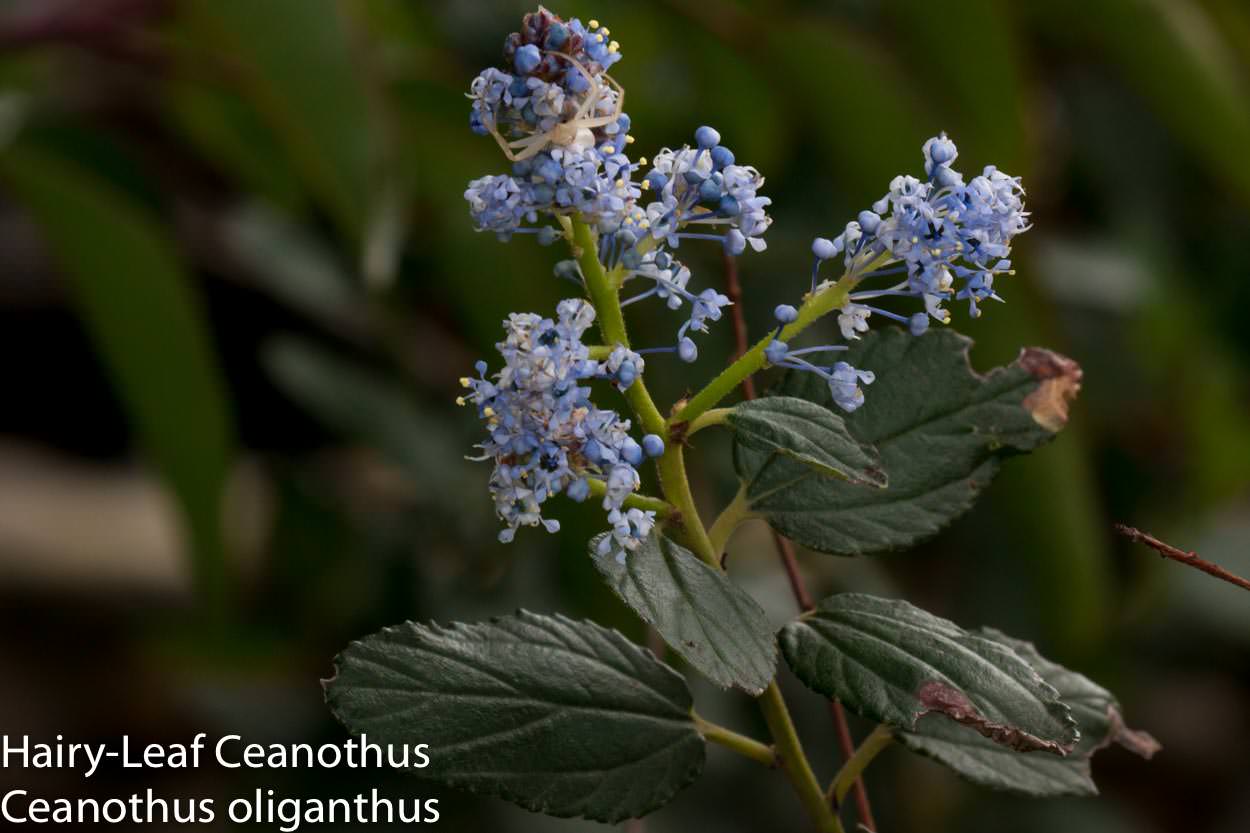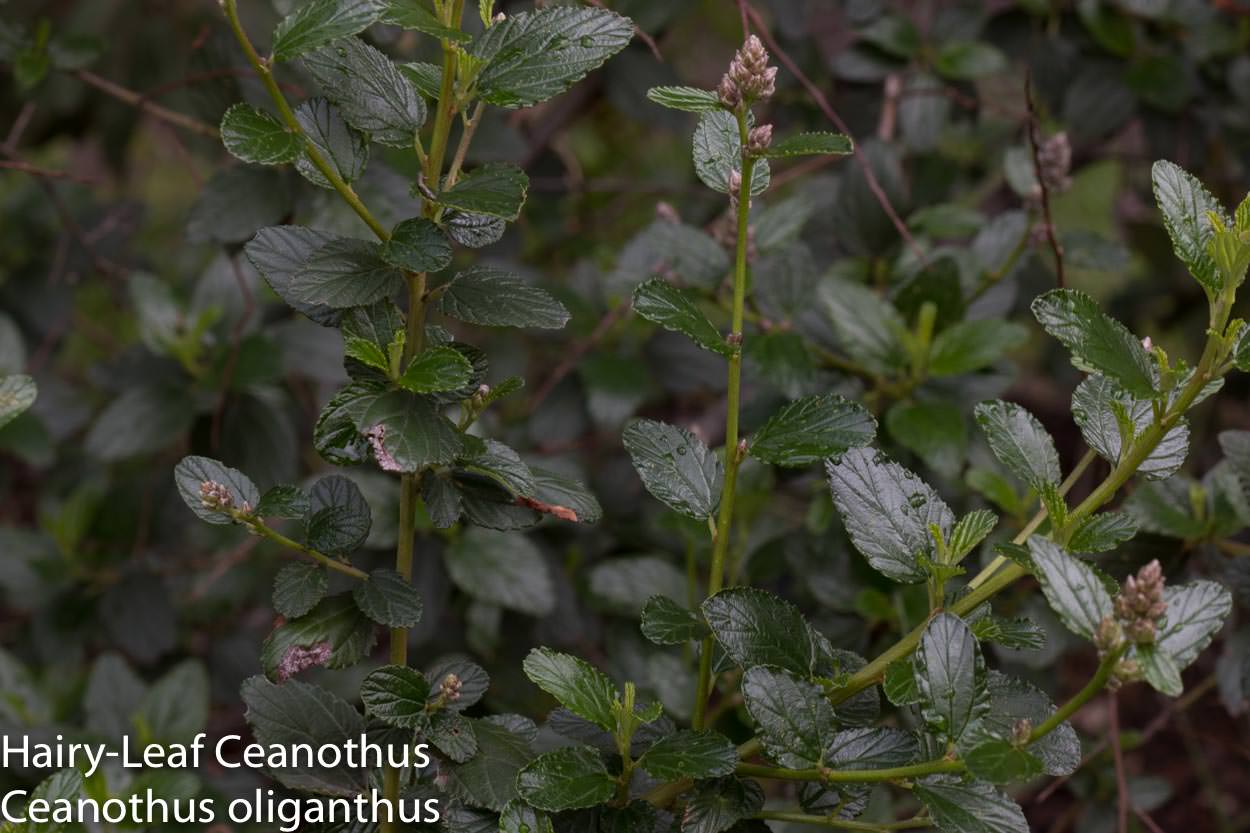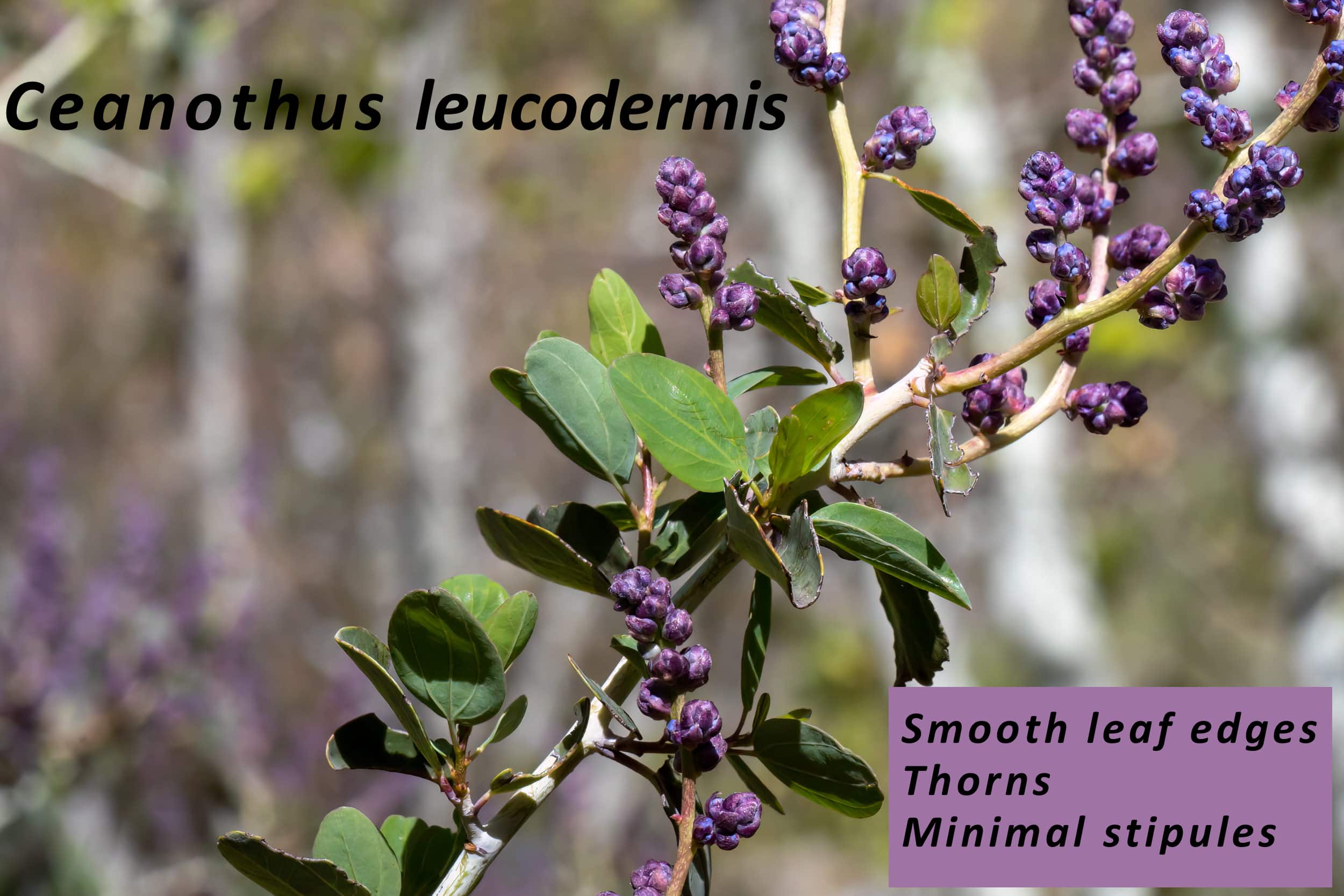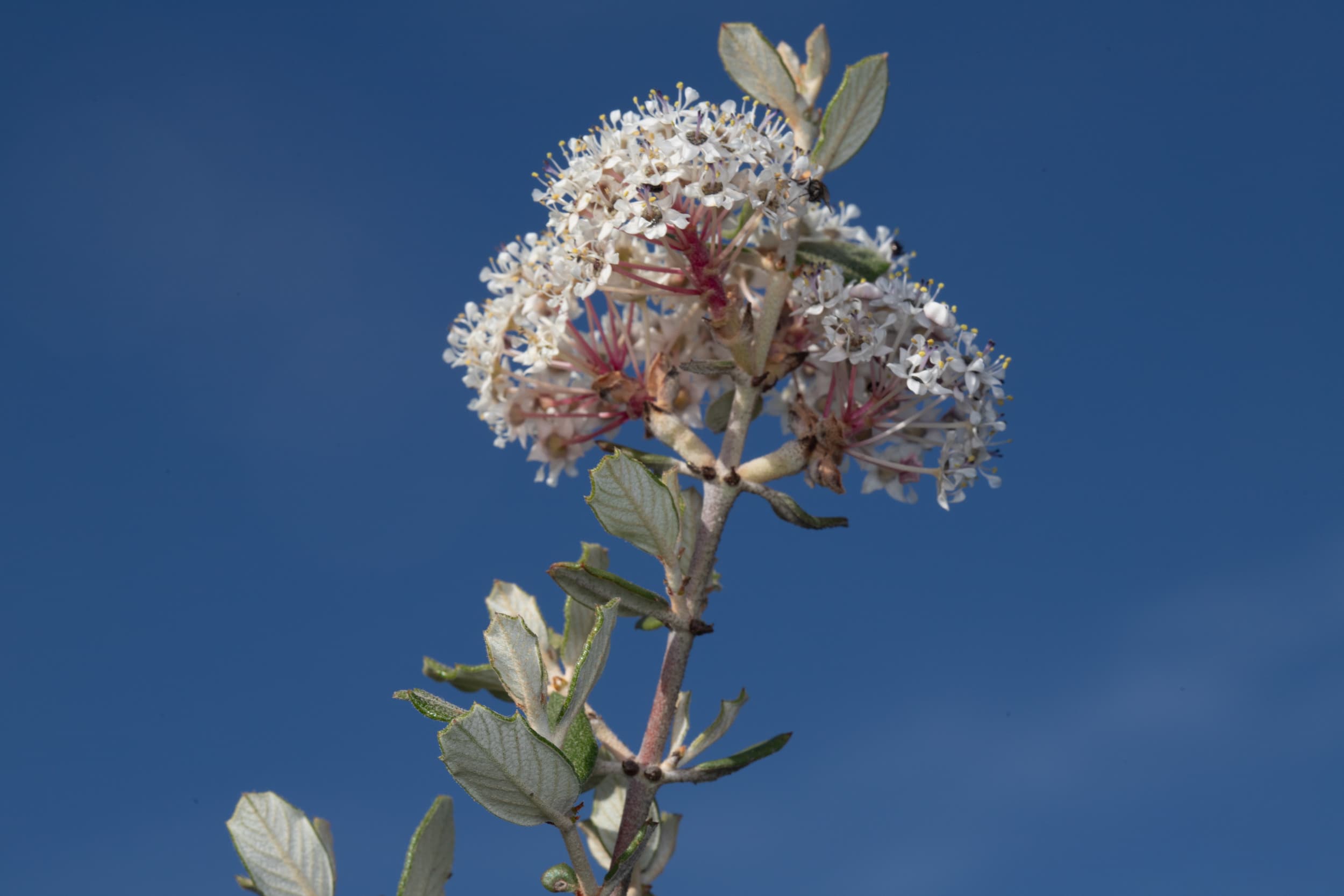Santa Monica Mountains Trails Council Plants Resource Page
Plant of the Month - Ceanothus

Plant Description
| Common Name(s): | Ceanothus |
| Scientific Name: | Ceanothus Species |
| Family: | Rhamnaceae (Buckthorn) |
| Plant Type: | Shrub |
| Size: | 5 to 20 feet high |
| Habitat: | Chaparral, ridges, slopes, woodland, coastal scrub |
| Blooms: | November to March |
| Fire Response: | Seeds respond to fire cue |
There are six species of Ceanothus that can be found in the Santa Monica mountains, and about ten times that number of varieties are able to be grown in California. Our natives bloom from January to May. Flower colors range from white to various shades of blue, and are found in clusters. Subtle yet conspicuous, whole hillsides lighten up in the spring when these plants are in bloom.
Characteristically, Ceanothus need good drainage, tolerate cold, heat, and wind, are adapted to fire, and are generally low maintenance. If you have ever done trail maintenance that involved cutting this plant, you may remember the sharp spines on its branches; Ceanothus means spiny plant in Greek. The common name of "Soap Bush" is earned because the flowers of some varieties will develop a lather when rubbed with water.
The following chart gives some distinguishing characteristics of the six kinds native to our mountains.
Contributed by Liz Baumann
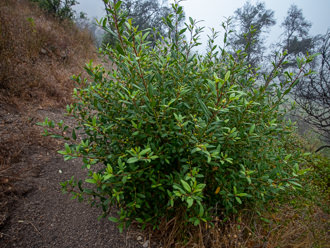
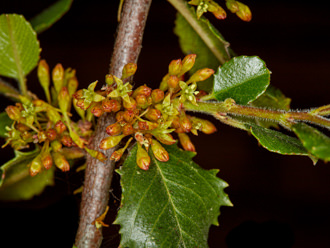
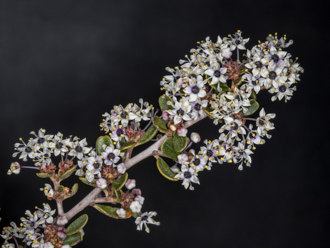
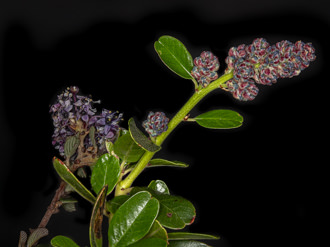
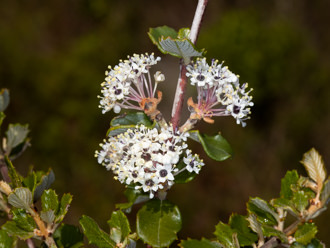
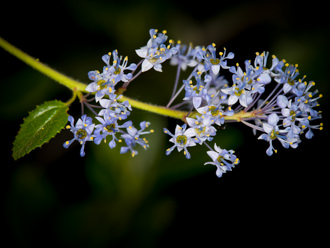
Ceanothus - Originally featured: March 2006
Last modified: April 13 2023 15:36:22.
References:
Wildflowers of the Santa Monica Mountains, by Milt McAuleyFlowering Plants: The Santa Monica Mountains, Coastal and Chaparral Regions of Southern California, by Nancy Dale
Chumash Ethnobotany: Plant Knowledge Among the Chumash People.., by Jan Timbrook

